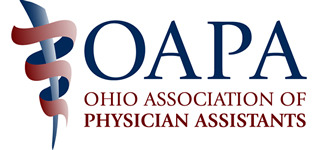Complete Story
03/25/2024
Op-Ed: Paul M. Amiott, PA-C, EMT-P on Collaboration Between State and Specialty PA Organizations
Helping PAs Remove Barriers to Practice at Our Full Capability
PAs in Ohio, like PAs in most states, face a number of barriers that keep us from practicing at the top of our capabilities. For example, PAs in Ohio are required to have a supervising physician instead of collaborating physician as Ohio NPs have. There are also specific prohibitions in Ohio laws that prevent PAs from performing care that they could easily become capable to provide. For example, in emergency medicine, PAs can’t perform procedural sedation, order the medications to sedate and intubate a patient, pronounce death, or sign mental health holds. These barriers reduce the scope of PA practice and make the PA profession less attractive to employers.
The requirement for supervision vs. collaboration makes PAs far less attractive to employers in some settings such as convenience clinics and in an increasing number of job postings, limit them to NPs only. Reduced scope of practice and greater dependence upon physician supervision leads to fewer jobs, reduced scope, and reduced compensation.
State and specialty PA organizations bring different things to the table when working with state legislatures and medical boards to remove those barriers. State PA organizations, like the OAPA, have built working relationships with some state legislators and often have funded professional lobbyists working on their behalf. They often have the best insight into developing the strategy and tactics to best choose which battles to fight and when.
Specialty PA organizations bring other strengths. By OAPA’s estimates, only approximately 12% of PAs licensed in Ohio belong to OAPA. Specialty organizations often have a number of members that reside and/or practice in a state who don’t belong to the state PA organization. PAs often join specialty organizations because of the focused CME they provide and other benefits that directly affect their practice. If their funds only permit joining 1 organization, it is often the PA organization that represents their practice that they join. The specialty organizations can recruit those members and officers to be additional voices at state hearings, speak directly to their representatives, and engage in letter writing and email campaigns. The specialty organizations best know the specific state law barriers which affect them. They also can identify what other states have done to address those issues and speak to how removing barriers would improve the availability and quality of medical care in Ohio or whatever state the state PA organization serves.
SEMPA, the Society of Emergency Medicine PAs, is increasing its advocacy efforts and is looking to partner with state PA organizations to advocate for the changes needed to permit all PAs to practice at the top of their training and ability.
Paul M. Amiott, PA-C, EMT-P is an OAPA Fellow and Member, SEMPA Board of Directors.

